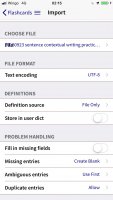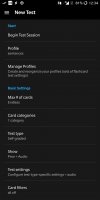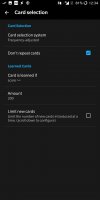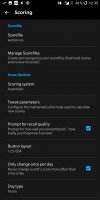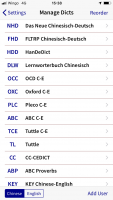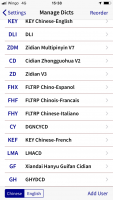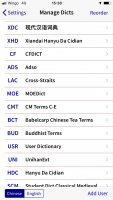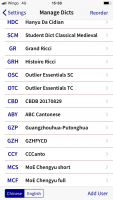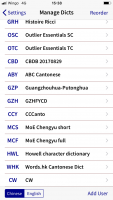Shun
状元
Hi leguan,
wow, you are like an angel! Now I can choose whether I would like to focus on more advanced vocabulary (in the HSK sentence set) or on sentence structure and everyday communication (tatoeba). Thank you kindly!
Now I can choose whether I would like to focus on more advanced vocabulary (in the HSK sentence set) or on sentence structure and everyday communication (tatoeba). Thank you kindly!
Good point also on the semicolons and colons. It's too bad I couldn't get any better word segmentation on the tatoeba lists. I will try to improve on it by reading up on the topic. Segmenting and adding pinyin in one go would surely be preferable to using two different tools (the Stanford segmenter which puts spaces between the Hanzi, and Pleco's built-in pinyin completion function).
Let's hope that others will jump on the contextual writing practice bandwagon as time goes on.
One piece of feedback on the system: After about one day of successful intermittent studying with the contextual writing practice system, I can already say that when I feel the need to test myself on the same words in the Chinese-English direction using a filter, I will set the Flashcards module to Remap cards to dicts so I can see a full dictionary definition of the words, which of course conveys more information than the HSK/tatoeba sentences alone would. One already studies the words’ context very well when one studies in the English-Chinese direction, so that should be quite sufficient. It's also great to see more examples of usage from a good dictionary to complement the HSK/Tatoeba sentences’ context.
Perhaps one last wish for now (no hurry): If it's easy enough, could you perhaps also make a Tatoeba Chinese-to-German contextual writing practice list? Then I could also give it to my younger students of the German mother tongue (and their teacher), who would surely love it if I explain it to them properly. It's often better to test against your mother tongue than through English.
Would you like me to create yet more language pairs with my Python script? Tatoeba offers all of the following languages, and any language can be paired with any other language:
https://tatoeba.org/eng/stats/sentences_by_language
Best regards, have a nice evening,
Shun
wow, you are like an angel!
Good point also on the semicolons and colons. It's too bad I couldn't get any better word segmentation on the tatoeba lists. I will try to improve on it by reading up on the topic. Segmenting and adding pinyin in one go would surely be preferable to using two different tools (the Stanford segmenter which puts spaces between the Hanzi, and Pleco's built-in pinyin completion function).
Let's hope that others will jump on the contextual writing practice bandwagon as time goes on.
One piece of feedback on the system: After about one day of successful intermittent studying with the contextual writing practice system, I can already say that when I feel the need to test myself on the same words in the Chinese-English direction using a filter, I will set the Flashcards module to Remap cards to dicts so I can see a full dictionary definition of the words, which of course conveys more information than the HSK/tatoeba sentences alone would. One already studies the words’ context very well when one studies in the English-Chinese direction, so that should be quite sufficient. It's also great to see more examples of usage from a good dictionary to complement the HSK/Tatoeba sentences’ context.
Perhaps one last wish for now (no hurry): If it's easy enough, could you perhaps also make a Tatoeba Chinese-to-German contextual writing practice list? Then I could also give it to my younger students of the German mother tongue (and their teacher), who would surely love it if I explain it to them properly. It's often better to test against your mother tongue than through English.
Would you like me to create yet more language pairs with my Python script? Tatoeba offers all of the following languages, and any language can be paired with any other language:
https://tatoeba.org/eng/stats/sentences_by_language
Best regards, have a nice evening,
Shun

